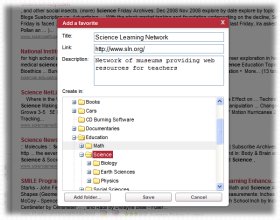|
Education
Web
Viewing 1-2 of 2 total results
expression. The strands to be emphasized at the third-grade level are listed on the previous page under the appropriate domains. Each of the strands is addressed separately with the exception of the written and oral English-language conventions strand, which is integrated within appro&...
1
0
expression. The strands to be emphasized at the third-grade level are listed on the previous page under the appropriate domains. Each of the strands is addressed separately with the exception of the written and oral English-language conventions strand, which is integrated within appro priate sections. writing listeningreading Word Analysis, Fluency, and Vocabulary speaking Development Decoding and Word Recognition Specific decoding instruction in the earlier grades and redundancy of exposure through
103
0
http://www.cde.ca.gov/re/pn/fd/documents/rlafw.pdf#page=103
www.cde.ca.gov/re/pn/fd/documents/rlafw.pdf#page=103
expression. The strands to be emphasized at the third-grade level are listed on the previous page under the appropriate domains. Each <span class="highlight">of</span> the strands is addressed separately with the exception <span class="highlight">of</span> the written and oral English-language conventions strand, which is integrated within appro­ priate sections. writing listeningreading Word <span class="highlight">Analysis</span>, Fluency, and Vocabulary speaking Development Decoding and Word <span class="highlight">Recognition</span> Specific decoding instruction in the earlier grades and redundancy <span class="highlight">of</span> exposure through
Reading Word Analysis Apply knowledge of cognates and false cognates to derive meaning from literature and texts in content areas. Grade Two 1.1 Recognize and use knowl edge of spelling patterns (e.g., diphthongs, special vowel spellings) when reading. 1.2 Apply kno...
1
0
Reading Word Analysis Apply knowledge of cognates and false cognates to derive meaning from literature and texts in content areas. Grade Two 1.1 Recognize and use knowl edge of spelling patterns (e.g., diphthongs, special vowel spellings) when reading. 1.2 Apply knowledge of basic syllabication rules when reading (e.g., vowel-consonant-vowel = su/per; vowel-consonant/ consonant-vowel = sup/per). 1.3 Decode two-syllable nonsense words and regular multisyllable words. 1.4 Recognize
39
0
http://www.cde.ca.gov/re/pn/fd/documents/englangdev-stnd.pdf#page=39
www.cde.ca.gov/re/pn/fd/documents/englangdev-stnd.pdf#page=39
Reading Word <span class="highlight">Analysis</span> Apply knowledge <span class="highlight">of</span> cognates and false cognates to derive meaning from literature and texts in content areas. Grade Two 1.1 Recognize and use knowl­ <span class="highlight">edge</span> <span class="highlight">of</span> spelling patterns (e.g., diphthongs, special vowel spellings) when reading. 1.2 Apply knowledge <span class="highlight">of</span> basic syllabication rules when reading (e.g., vowel-consonant-vowel = su/per; vowel-consonant/ consonant-vowel = sup/per). 1.3 Decode two-syllable nonsense words and regular multisyllable words. 1.4 Recognize
63
0
http://www.cde.ca.gov/re/pn/fd/documents/englangdev-stnd.pdf#page=63
www.cde.ca.gov/re/pn/fd/documents/englangdev-stnd.pdf#page=63
READING Literary Response and <span class="highlight">Analysis</span> <span class="highlight">For</span> English learners to improve their English skills and reduce the likelihood that those skills will level off before the students reach fluency, they need to learn academic content along with language skills. Instruc­ tion in academic areas, such as literature, mathematics, geography, history, govern­ ment, and science, not only familiarizes learners with the content <span class="highlight">of</span> the discipline, but also, what is more important, teaches them how to use the language
|
